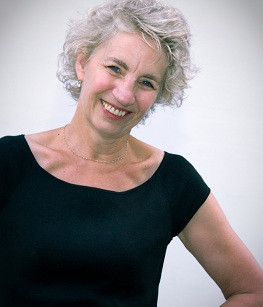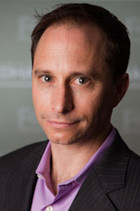Julia Steiny: A Fresh Take on Separate, but Not Remotely Equal Schools
Thursday, February 21, 2013
Michael Petrilli's second son wasn't even born when he was deep into researching where to send his boys to school. But you know how the zealotry of parenthood can change a man. He tells his personal story, peppered with much research, in a short, engaging new book The Diverse Schools Dilemma–A Parent's Guide to Socioeconomically Mixed Public Schools.
Such as education punditry has stars, Petrilli is one. Now a VP at the Fordham Institute, he worked in the Bush-era Department of Education. His opinion pieces regularly appear in outlets from the New York Times to NBC nightly news. He's young, smart and articulate. He knows education.
When his first child was born, Petrilli and his wife were living in the fun, diverse neighborhood of Takoma Park in Washington D.C.. Ideally, the couple wanted to educate their kids in a diverse setting. But their neighborhood schools had lackluster scores and mediocre reputations.
GET THE LATEST BREAKING NEWS HERE -- SIGN UP FOR GOLOCAL FREE DAILY EBLASTSpeaking recently to a gathering in Rhode Island, he explained his fatherly dilemma: Could his kids have both a great academic education while learning alongside children from richly-different cultures and classes? It wasn't obvious.
The Meaning of Diversity
First understand what "diverse" really means. Petrilli visited several racially-diverse private schools to weigh their plusses and problems. Sidwell Friends is one such, where the Obama girls contribute to that school's 40 percent students of color. Such schools offer skin-tone diversity, but certainly aren't educating kids from the 'hood.
So the book's dilemma narrows to socio-economic diversity, mixing middle and low-income kids. Family income, especially poverty, does correlate with race, but less and less over recent decades. The real issue is kids' class background.
In an interview for Petrilli's book, Naomi Calvo, who wrote her Harvard Ph.D. dissertation on Seattle's controlled-choice program, was blunt: "The types of reforms that are considered best practice for disadvantaged kids are exactly what middle-class parents hate. I don't know how you're going to have a meeting of the minds on that."
Petrilli adds, "Partly this is about structure -- affluent parents want the school day to end early enough so there's time for enrichment activities and sports practice, while poor kids need more learning time."
To the local gathering, Petrilli said, "I come from a line of education reformers who support 'no-excuses' schools, with direct instruction, the sorts of places that are benignly paternalistic and highly structured. Many middle-class parents hate these structured schools. But there's strong evidence that the progressive model works for middle-class kids, but has been generally disastrous for poor kids."
Hmmm, separate school strategies for kids from the upper and lower classes.
The True Division
Petrilli cites research done by Annette Lareau who studied the parenting practices and everyday routines of 12 families from a range of income levels. She expected each family's style would be somewhat unique. In fact, the researchers found only two very distinct styles, divided along class and not racial lines.
The middle-class families super-schedule their kids. And they talk with them—between dance and archery classes—enriching the kids' vocabulary, verbal skills, and their ability to summarize, clarify and manage information.
But working class and poor families do not much encourage debate or negotiation. Petrilli writes, "...the adults are more authoritarian -- and use more physical punishment." These parents also "believed in letting their kids be kids -- to have plenty of unstructured time to play, to spend long summer days or weekends without supervision, and to make fun on their own. (Which, interestingly enough, is the polar opposite of the structure they want from their schools.)"
While a sweeping generalization, affluent kids are ready to rock academically, building on the cognitive skills and expectations already hot-housed at home. Low-income parents appreciate rigid discipline at schools, and care far less about creativity and self-expression.
Liberal middle-class parents may think they want diverse schools, but they don't want their kids neglected, nor distracted by the behavior of children who haven't had structure at home.
And while the poor, ill-educated parents of Dr. James Comer and others are exceptions to these generalizations, lower-class parents prefer a relaxed home and tight discipline at the schools.
Many teachers would argue that parents want the schools to discipline their kids for them.
A Personal Choice
In his new book, Michael Petrilli shows the dilemma many parents are facing when choosing where to send their children to school.
And I give Petrilli credit for nailing the "dilemma" in the nation's schools. I have known it firsthand. My own kids attended urban public schools, for better or worse. Though it was sometimes a painful struggle, I'm not sorry I did it.
So I refuse to concede to segregation. We don't yet have scalable solutions. But it seems unAmerican to accept different school strategies for upper and lower classes. To be fair, Petrilli isn't nuts about the idea either, as his book makes clear.
But his heart is only torn. Mine breaks.
Julia Steiny is a freelance columnist whose work also regularly appears at EducationNews.org. She is the founding director of the Youth Restoration Project, a restorative-practices initiative, currently building demonstration projects in Rhode Island. She consults for schools and government initiatives, including regular work for The Providence Plan for whom she analyzes data. For more detail, see juliasteiny.com or contact her at [email protected] or c/o GoLocalProv, 44 Weybosset Street, Providence, RI 02903.
Related Articles
- Julia Steiny: Can Charter Schools Save Providence?
- Julia Steiny: Inquiring Minds Want To Know Science
- Julia Steiny: Too Much Screen Time Hurts Little Kids
- Julia Steiny: Common Core Curriculum Standards are Flawed
- Julia Steiny: Legislators, Stop Ruining Four Months of School
- Julia Steiny: Vocational Ed Connects Kids to Real Futures
- Julia Steiny: Death Takes a Whack At Priorities
- Julia Steiny: Michelle Rhee Throws Gas on Ed Reform Hostilities
- Julia Steiny: What a ‘Flourishing’ Kid Looks Like
- Julia Steiny: Do Not Succumb to Fear
- Julia Steiny: Overcoming the Tyranny of the High School Schedule
- Julia Steiny: When a School Makes Itself Useful To Business
- Julia Steiny: Equity OR Excellence—Open Enrollment or Selective Admissions?
- Julia Steiny: Say No to Parent Trigger Laws
- Julia Steiny: Why American Students are Playing Catch Up with the Rest of World
- Julia Steiny: The Man Who Made Algebra Child’s Play
- Julia Steiny: Fifth-Graders Having a Blast with Algebra
- Julia Steiny: The Sad, Sweet Intimacy of A Second Death
- Julia Steiny: ‘Zero Tolerance’ Doesn’t Work in Our Schools
- Julia Steiny: Get Creative with Private School Vouchers
- Julia Steiny: The Secret Weapon for RI’s Top Elementary School
- Julia Steiny: Brains Need To Be Healthy To Learn
- Julia Steiny: Give Thanks, for God’s Sake
- Julia Steiny: The Trouble With ‘No Excuses’ Schools




